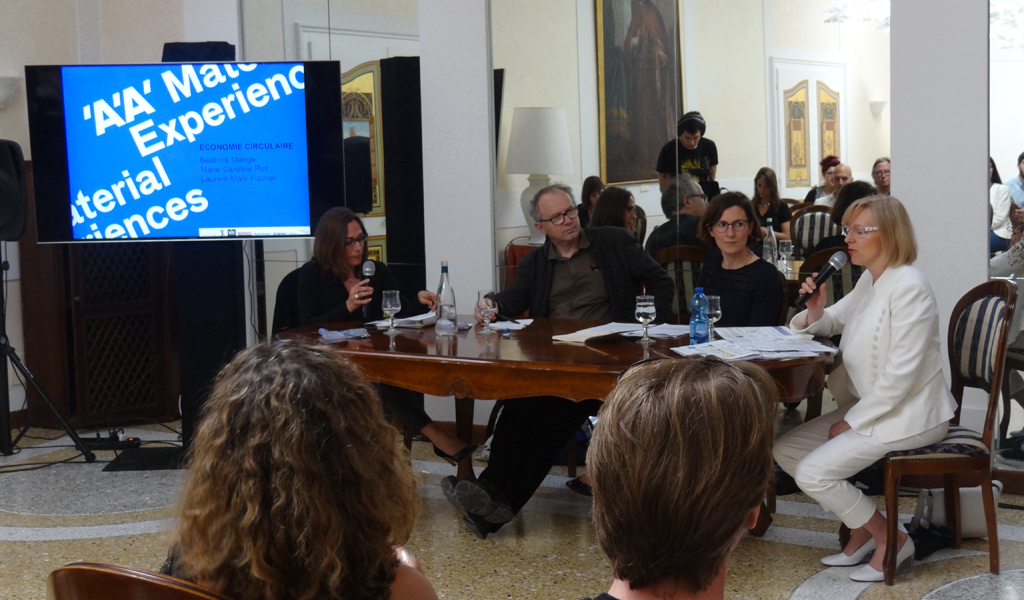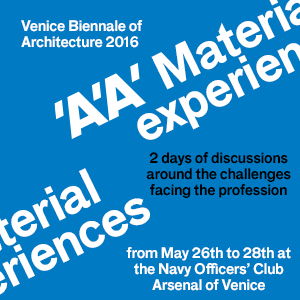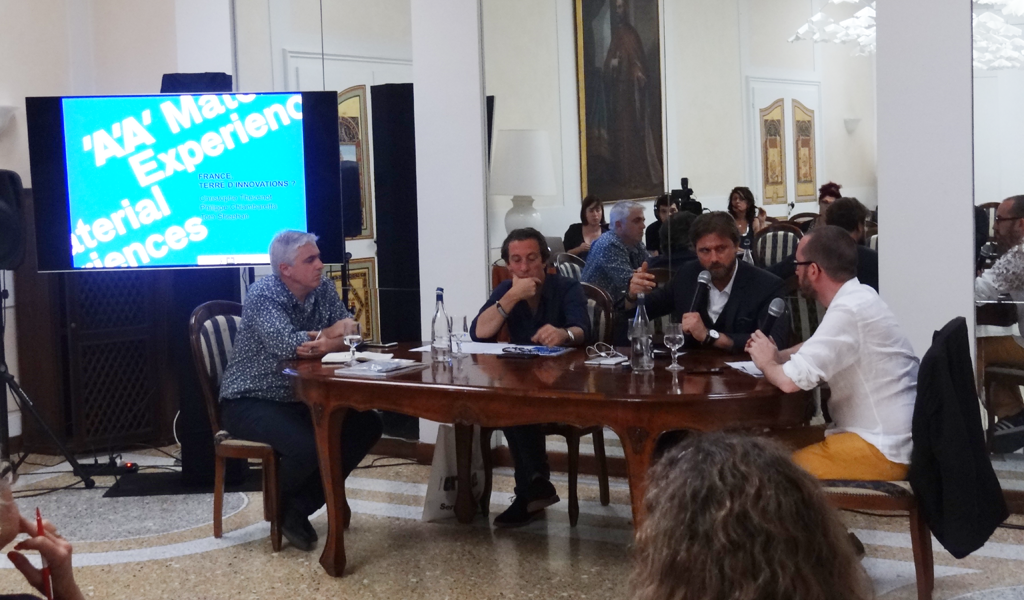Circular economy, a global challenge
On the occasion of the 15th Architecture Biennale, L’Architecture d’Aujourd’hui organized on May 27 and 28, four debates on the profession’s major challenges in Venice. The discussion about “Companies and architects, acting together to realize the ambitions of a circular economy,” brought together Marie-Caroline Piot and Laurent-Marc Fischer, architect partners at Architecture-Studio, as well Béatrice Mange, creation and trends director at Tarkett.
The circular economy has now supplanted sustainable development as a leitmotiv in architects’ discussions, in France as well as abroad. The “Reinventer Paris” call for innovative projects is just one example of how the “cradle to cradle” approach is now guiding project managers’ reflections. A fashionable and yet relevant subject, as Alejandro Aravena’s Biennale nevertheless demonstrated.
And if architects have taken hold of such a theme today, industrialists have been involved for years in the eco-design and recycling of their products. Béatrice Mange creation and trends director of Tarkett, an international manufacturer of floor coverings explains: “we have been investing for over 50 years in the development of recycling sectors for floor coverings. In France, in 2010, we launched the ReStart program that collects and recycles offcuts on our construction sites”.
As for the Architecture-Studio office, it has developed projects consistent with this approach – such as the Collège Guy Dolmaire in Mirecourt (Vosges), delivered in 2004 – for the last 15 years. When this high school was being designed, France was struck by the devastating 1999 storm. Architecture-Studio then proposed “reusing the wood of trees that fell during the storm.” However, legal obstacles squashed this initiative. The national theater of Bahrain (2012), on the other hand, succeeded in combining contemporary Western design with local ancestral know-how: elm was used to cover the curved walls of the auditorium, totally built by craftsmen from the region. According to Marie-Caroline Piot, “few built projects that explore the circular economy,” exist in France but AS decided to make it the heart of the “Le Sot-l’y-laisse”* project, proposed in the framework of “Reinventer Paris.” On this occasion, the office explored all the project’s dimensions. “We were notably interested in the building’s reversibility by imagining a grid system enabling the offices to be converted into apartments.” The Paris office designed a “matrix” architecture integrating façade coverings from recycled materials provided through a partnership with Bellastock, a group specialized in material deconstruction. “All projects are an experimentation site and an oportynity for practical application of a global circular economy,” added Laurent-Marc Fischer. A genuine research project that would find its limits in the regulations and certifications in place, “le Sot-l’y-laisse” nevertheless enabled AS to explore leads some of which, like reversibility, should be applied in future projects.
And what about the use? This subject is often taken up by architects in terms of “urban mixed use,” while Tarkett has rolled out one of the most concrete approaches basing the products design of on behavioral studies. Composed of 90% natural products (linseed oil, pine resin, cork and wood powder), the “cradle-to-cradle” certified linoleum developed by the manufacturer is not just trendy. “Our floor coverings combine contrasts and nuances for the users’ psychiatric benefit,” pointed out Béatrice Mange, who notably advises clinics for Alzheimer’s patients. For manufacturers as well as architects, the ultimate challenge of the circular economy remains the user and the inhabitant.
* The oyster found along a chicken’s backbone, literally “The fool leaves it aside.”
—
For more information, site de Tarkett’s website and Architecture-Studio’s office.




